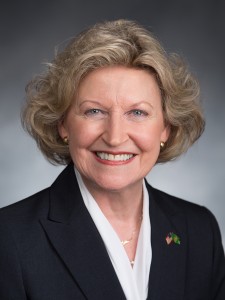We keep hearing the strangest things about our tuition plan in the state Senate – our unprecedented, first-of-its-kind proposal to roll back college tuition at Washington colleges and universities. Sen. John Braun, R-Centralia, and I have proposed the College Affordability Program which would cut tuition an average 25 percent, and make it a matter of state policy to keep increases low in the future. No other state has ever done anything like it. From the public we’re hearing cheers.
And what we’re hearing from our opponents are curious and convoluted arguments that duck the real issue. Our plan challenges the assumptions, policies and spending patterns that forced some of the country’s steepest tuition hikes. Some people might prefer our current spending priorities. Some interests no doubt feel threatened. But they can’t win by telling the people of Washington they ought to keep paying higher tuition, so we get political arguments like the one state Treasurer Jim McIntire advanced the other day. If you follow his logic, he’s telling us the Legislature has been making bad decisions for such a long time it should just keep on making them.
Thirty-five years ago the state had the right idea. To make higher education accessible, it kept tuition affordable. At the University of Washington in 1980 tuition was just $667, low enough that students could work their way through school. The following year lawmakers began cutting subsidies for colleges and universities. Higher education’s share of the budget declined as a largely Democratic Legislature put more emphasis on social programs and the advancement of public employee unions. Schools made up the difference by raising tuition. These tuition hikes really ought to be seen as a hidden tax on working families, now financed with parental savings and student loans – all to pay for the new budget priorities.
Today a four-year degree at the UW costs close to $50,000, 81 percent higher than the national average. Tuition has increased nearly 20-fold since 1980, while inflation has merely tripled. The typical public-college student graduates more than $20,000 in debt, and defers important life decisions because of the burden of monthly payments.
Our treasurer, a Democrat, argues against the plan. His justification is a savings program Washington established in 1998. The Guaranteed Education Tuition program allows parents to pay for tomorrow’s college tuition at today’s rates. Nearly $3 billion has been invested, and no wonder. Those who got in at the right time got an outstanding deal.
We gave GET a lot of thought when we drafted our plan. We never promised investors they would make big money, but we do want to make sure no one gets hurt when we cut tuition. So we award additional tuition credits for the same amount of money – sort of a stock split. Everyone sees a return. The non-partisan state actuary tells us our numbers are sound. Yet the treasurer objects that some people might see better returns than others, depending on when they invested, and those people might think that’s unfair.
The fact is that returns have always depended on when people invested. Consider those who invested in GET before the recession, when tuition nearly doubled, and who have since sent their kids to school. Did they complain it was unfair for them to make a killing? Of course not. There are elements of risk and reward in any investment, and we will do right by investors as long as we keep them whole.
The treasurer’s other objection deserves more serious consideration. How can you run a program intelligently if the Legislature keeps changing its mind? We need to recognize the truth about GET – it was an inadequate response to the problem of fast-rising tuition, predicated on pessimism. The program made sense as long as the state continued on its self-destructive course forever, raising tuition dramatically every year, to the point that students inevitably would find college beyond their reach. We’re about there already. No one guaranteed investors the Legislature would always be shortsighted, though I’m sure that seemed like a good bet in the past. Thank goodness we’re about to prove it wrong. The treasurer says that after our stock split, it will be extremely difficult for some future Legislature to change course again. I will grant him this point. Sounds to me like an excellent reason to support our plan.
Sen. Barbara Bailey, R-Oak Harbor, is chair of the Senate Higher Education Committee.







